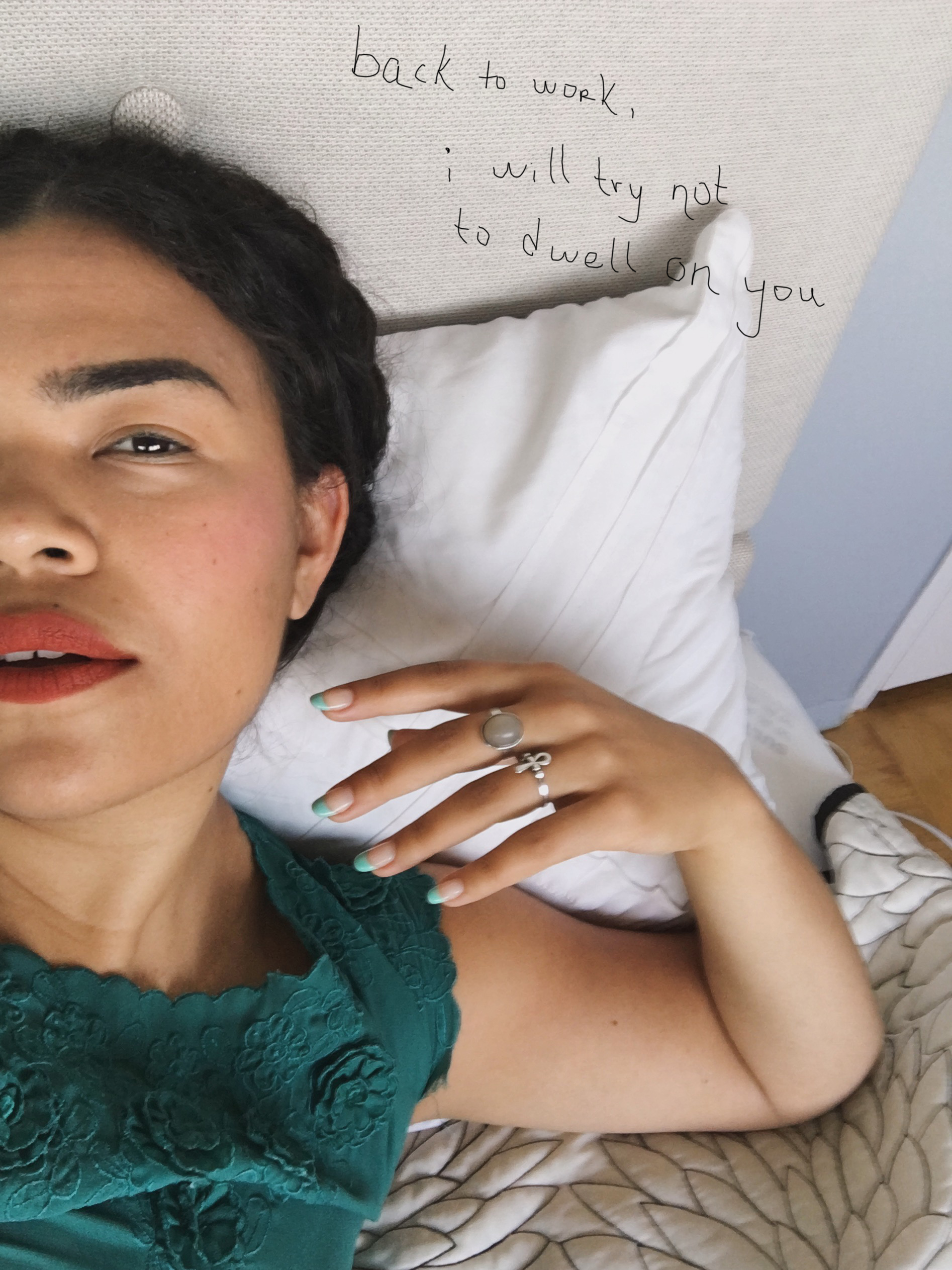When I began working on this project, I thought to myself what are the biggest aspects of Frida Kahlo’s life. It was love. There is no story of Kahlo without talking about her tumultuous marriage to famed Mexican muralist Diego Rivera. And there was no denying the love that she had for herself. Yet, in all of Frida’s strength, talent, vision, sense of expression and individuality, she was putty in the hands of Diego while it’s said that Diego treated her like a “thing”. There is no discounting the amount of inspiration, influence that he had on her and how that affected her work – but for me, that will never allow me to turn away from the disregard for her that he had in her lifetime. Which only proved to hit him like a ton of brick on the day of her death. “July 13, 1954 was the most tragic day of my life. I had lost my beloved Frida forever. Too late now, I realized that the most wonderful part of my life had been my love for Frida.” – Diego Rivera
I excruciatingly connect with her experience with Diego with past, unhealthy relationships within my own reality. Truth be told: for quite a few months, I had a unattractive photo of Diego Rivera as my iPhone background to remind myself not to return to a lover that would have given me a very similar existence that Diego gave Frida, had I decided to stay.
I think about Frida’s life, how fearless she was in expressing her truth: whether it be her masculinity, her sense of style, her pain and her reality – and I see a woman was hell-bent on being herself. While many critics would differ, her way of being and even her work depicted a woman who knew who she was and wasn’t afraid to let you know about it. At the core, that is the reason that I feel connected to her. In one of Frida’s largest and most recognizable works, “Two Fridas“, (which I recreate for my post on Honoring Your Intuition) it has been said that she is representing the Frida that Diego loved and the one he could do without but in my findings, the most riveting interpretation of her famed painting was by Nathalie Alyon. From her piece “Living with Symbols“, she explains:
One of the reasons I reject the common interpretation of this painting is due to the size of Diego. He is so tiny that I had to walk up to the rather large painting and squint my eyes to figure out what Frida is holding in her hand. Could something or someone, literally so little, have the power to grant life or death? Diego’s miniscule depiction next to two giant Fridas is also a testament to the artist’s witty, vexing sense of humor—Frida was a tiny small woman half the size of the rather tall and heavy Diego.
Viewing the painting from this perspective, the work transcends an innovative representation of love, marriage, and heartbreak into a statement on self-reliance. It is Frida that keeps Frida alive, not Diego. It is Frida that kills Frida, not Diego. It is the self above all other outside influences that matter. It is the self that loves or self-destructs. It is the self that smiles despite dying and frowns despite living. It is the self that decides.
This interpretation helped set the tone for this project, helped me understand why I was so fascinated with this woman in the first place and all of the different directions I could go in digging deeper in understanding her life. If Frida is going to be up for public consumption, it would serve all that she has given to generations of women that were to follow in her footsteps, a dialogue to really talk about why we are influenced by her works, her style of dress, her politics and most importantly her unconditional, inconvenient, volatile and violent love.
In 1949, Frida painted Diego & I (Diego y Yo), illustrating the deep pain and sadness that she experienced by way of his countless acts of infidelity and disloyalty. This piece, so moody and painful, kept staring at me – trying to tell me something. This is the second time that Diego shows up in her painting on her third eye (the other being Self-portrait as a Tehuana, 1943 also known as Diego on My Mind) If there were anything that I could change about the outcome of her story, it would be that she relinquish the power that she allowed Diego to have over her. So for my interpretation of Diego & I, I decided to use my own image instead of Diego’s. It felt necessary for me to change the narrative, show the dualities within us all and we can be self-reliant for our own love, our own strength & our own self worth.






beautifully written